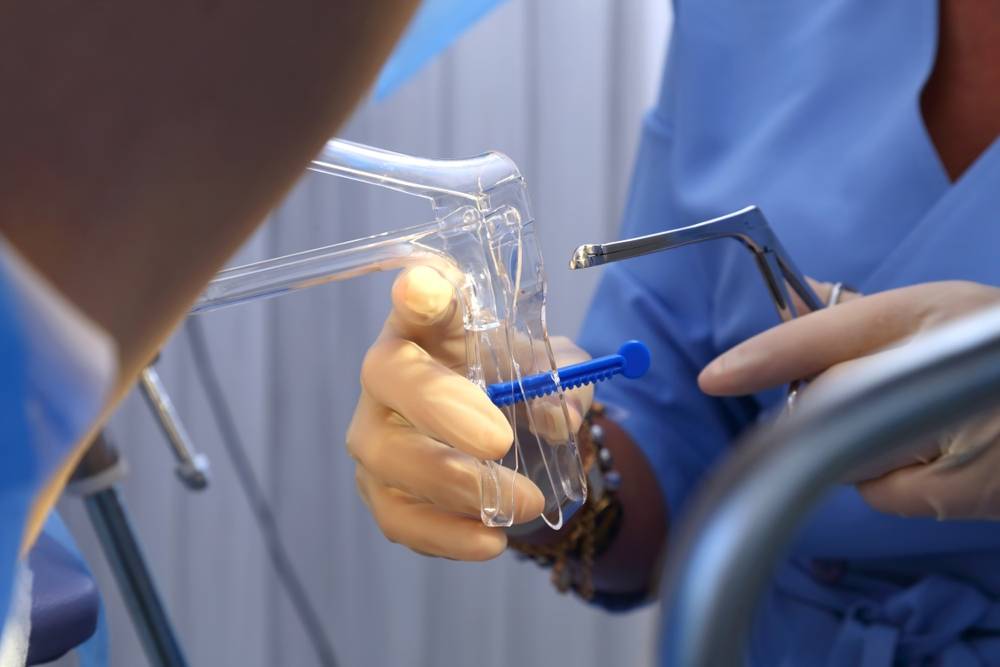Cervical cancer is the third most common type of cancer found in Asian region. It is estimated that in 2018, around 158,000 people were diagnosed with cervical cancer in South East Asia. Though the countries in Asia are taking all efforts to screen and treat cervical cancer, the number is increasing every year.
What is Cervical Cancer?
Cervical cancer is a type of cancer that affects the cervix, the part that connects the uterus or womb to the vagina. One of the main causes of cervical cancer is infection by specific high-risk strains (e.g. 16, 18) of Human Papillomavirus (HPV); other commonly occurring strains of HPV may either not wreak any havoc in the body at all, or cause more benign problems e.g. skin/genital warts. HPV is usually spread through sexual intercourse.
Early in the disease, cervical cancer may be asymptomatic. In advanced cervical cancer, the most common symptoms are vaginal bleeding after intercourse, between periods or after menopause, watery and bloody vaginal discharge with a foul smell. Once the cancer has spread, it can cause pelvic pain, swollen legs, trouble passing urine, weight loss and fatigue.
If you experience any of the above symptoms, then you should consult a doctor without delay.
As cervical cancer develops very slowly, early detection and treatment is most often curative.
Who Is At Risk of Developing Cervical Cancer?
The following are the factors that can increase your risk of getting cervical cancer
- Multiple sexual partners: If you have sex with multiple partners and your partner also has multiple sexual partners, then it increases the chance of acquiring Human Papillomavirus (HPV), the major cause of cervical cancer.
- Early sex: If you have sex early on in your life (i.e. before 16 years of age or within one year of starting your periods), then it increases your exposure to the cancer-causing HPV virus.
- Other sexually transmitted infections (STIs): If you are diagnosed with other STIs like HIV/AIDS, gonorrhea and chlamydia, then your chances of getting cervical cancer is high.
- Taking birth control pills: If you take birth control pills for a long time, i.e. more than 5 years, then it increases the chance of contracting cervical cancer.
- Smoking: Carcinogenic tobacco by-products have been found to be deposited in the cervical mucus of female smokers, and may promote HPV synthesis or cause damage to cervix cells. Smoking also weakens the immune system.
How Can You Prevent Cervical Cancer?
Cervical cancer can be prevented with the following measures:
Stop smoking
With smoking cessation, it stops the onslaught on cervical cells by carcinogens. The immune system is also better placed to fend off HPV infections.
Exercise caution while having sex
You should always ensure safety while having sex to prevent STI’s. It is advisable to use safe measures like condoms and limit the number of sexual partners to reduce the chances of contracting cervical cancer.
Go for vaccination early
HPV vaccine (e.g. Gardasil, Cervarix) is effective in preventing specific types of HPV infection that may lead to cervical cancer. It is approved for use in females aged 9 to 26 years old, and most beneficial when given before one is sexually active.
Go for routine screening
It is recommended to go for regular screening for cervical cancer, as there are no signs or symptoms at the early stages. Furthermore, this facilitates early detection, which is imperative as cervical cancer is more than 90% treatable with early intervention.
There are two types of screening done for cervical cancer
- Pap smear: This test detects cell changes in the cervix that can lead to cancer. The doctor will insert a plastic or metal instrument into the vagina to collect cells, which will then be looked at under the microscope for abnormalities. Every woman above the age of 21 should undergo pap test once in 3 years or as recommended by the doctor.
- HPV test: This test is done to look for virus that can cause the aforementioned cell changes. Cervix cells are collected the same way as a pap smear, and checked for the DNA (genetic material) of the high risk cancer-causing HPV strains (e.g. 16, 18). This is a more effective test because while your cells may appear normal in a Pap smear, the presence of high-risk HPV strains renders increased risk of your cells turning cancerous in future.
If you are between 21 and 29 years, then you should get a pap smear done every three years.
If you are between 30 and 65 years of age, then a HPV test is recommended every 5 years.
Even if you have received the HPV vaccination, it is important that you still go for regular cervical cancer screening as the HPV immunisation only protects against 70 to 90 percent of high-risk HPV strains.
How is Cervical Cancer Treated?
Cervical cancer can be treated with surgery and radiation.
Surgery is recommended if the cancer cells have passed through the basement membrane of the cervix. If the disease has affected the deeper layer of the cervix but has not spread to other body parts, then a surgery may be recommended to remove the tumor.
Radiation makes use of high-energy rays to damage the cancer cells. The radiation can be internal, external or both depending on the severity of the disease.
Final Thought
The good thing about cervical cancer is that the survival rate is close to 100% when early cancer symptoms are found and treated. In addition, by avoiding the risk factors, the chances of contracting the disease can be brought down drastically.

